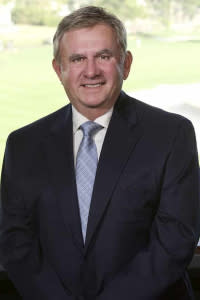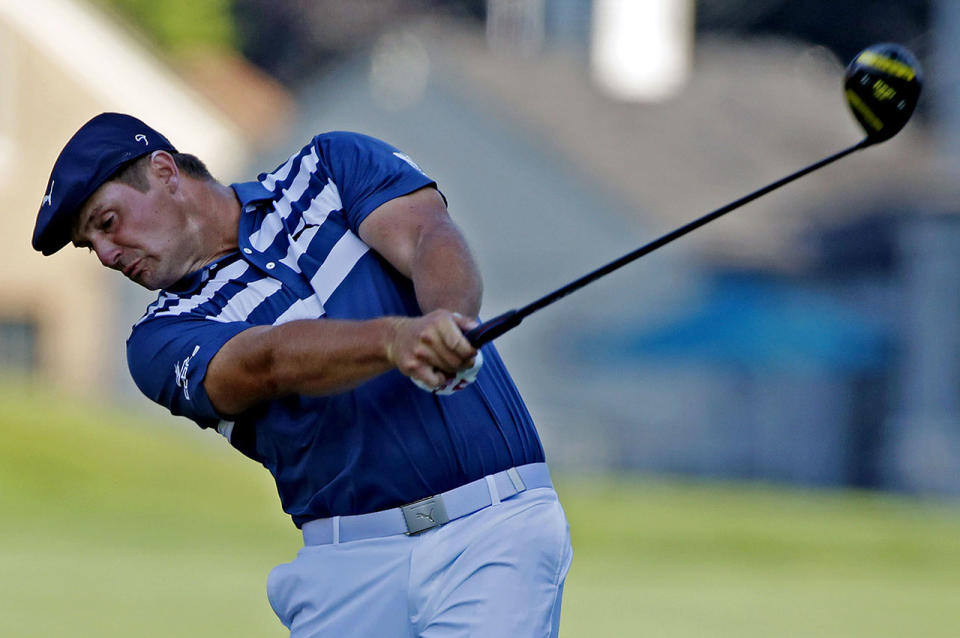Peter Kostis: A big argument for reducing distance is entirely backward

After years of looking at golf swings through the trusty Konica Minolta BizHub Swing Vision camera, I have learned to see things differently than most people. So, with the distance debate raging once again, it should come as no surprise that I see things differently than a lot of people.
About a year ago, the U.S Golf Association and the R&A announced that they feel distance and the trend toward bigger golf courses is a long-term problem for the game, and they want to take steps now to reduce the impact of distance on golf.
I live and teach in Scottsdale, Arizona, so I understand that water is a precious resource, and no one would argue that using more fertilizers, chemicals and water and increasing the cost of maintaining golf courses is a good thing. Still, I think one of the central premises of the USGA and R&A’s argument for reducing distance is entirely backward.
Most people think golf courses in the United States got longer over the last few years because technology advanced and equipment got better allowing players to hit it farther. The courses had to get longer to keep the shot values and the challenge, right? I think it’s the other way around: Equipment was forced to get better and enable golfers to hit longer shots because courses got longer.

The third hole at Pinehurst No. 2 (Courtesy of Pinehurst Resort)
Consider this: Pine Valley, Cypress Point, Augusta National, Shinnecock Hills, Pinehurst No. 2, Oakmont, Pebble Beach, Winged Foot and Merion were all built before 1932 during the golden age of golf course design. They demand creativity, the ability to hit shots in different directions and dictate golfers maintain control of the ball at all times. Their designers, men like Alister MacKenzie, Donald Ross, Charles Blair Macdonald, Seth Raynor, George Crump and Harry S. Colt, concentrated on making amateur golfers solve problems and think. That’s why those layouts can be so challenging. Riveria Country Club, which hosted last week’s Genesis Invitational, is another example of a classic venue with an original, unique style. The players loved it again this year, as they do every year.

Peter Kostis
Unfortunately, starting in the mid-1960s, when courses started being ranked by publications based on their difficulty, things changed. Golf course architects felt that to make courses harder, and therefore more prestigious, they had to make them longer. The people who wrote the checks for those courses also started coveting those rankings and the chance of hosting elite events. They wanted bigger, longer courses too, and in the 1970s, developers learned to love bigger venues because they created more room for houses.
But a huge reason why golf courses got longer in the ’80s, ’90s and 2000s, which rarely gets discussed, is the rise of “player architects.” During the golden age, designers made courses to challenge amateur players like themselves and members of local clubs. When big-name players and former pros started designing courses, they typically prefer to build things that challenge the world’s best players. In their minds, that means the course has to be stretched to “championship length”. All of this happened while we were using Persimmon woods and balata golf balls.
For years, I’ve said that if you want golfers to learn how to hit the ball farther, put them on bigger courses. They’ll learn, they’ll figure it out. That’s precisely what happened. As courses got longer, players started to emphasize length more than shot shaping and accuracy. Like Formula One race teams that modify their cars to suit that specific week’s track, golfers developed swings and manufacturers made equipment that launched the ball higher and made it spin less, maximizing distance to attack long straight holes.
So, in my opinion, that’s the origin of this issue, and it is essential to understand that if we are going to consider potentially changing the game.

Bryson DeChambeau (Brian Spurlock-USA TODAY Sports)
To put all the blame on manufacturers and advancements in technology is wrong. Consider this: In 2019, Bryson DeChambeau had a driving distance average of 302 yards. Last season it jumped to 322 yards, and heading into last week’s Genesis Invitational, his driving distance average was up to 329 yards. Now, with all due respect to the companies that make Bryson’s driver and golf ball, there has not been a game-changing technology advancement over the last two years that can account for his 27-yard increase off the tee over 24 months.
So, while technology is better, it is just one thing that elite golfers now rely on to hit the ball farther. Improvements in fitness and nutrition, better coaching, launch monitors and better custom fitting are also helping pros hit the ball farther. Are the USGA and R&A planning to govern those things too?
While I don’t have a problem changing the maximum length of clubs from 48 inches to 46 inches, I don’t understand why the USGA and R&A want to change how they test golf balls. They recently proposed optimum testing between launch angles of 7.5 degrees and 15 degrees with varying amounts of backspin (2,200-2,500 rpm).
No one, not even Bryson, Rory or Bubba, can hit a ball with a 15-degree launch angle and only 2,200 rpm of spin, yet, under proposed test conditions, if a robot can and the ball goes too far, the ball will be deemed non-conforming. Personally, I think this is a way for the USGA and R&A to lay the groundwork for a ball rollback.
There is also a proposal to adopting a Local Rule that would allow tournaments to mandate that elite golfers use distance-reducing equipment in specific tournaments. Ultimately, that would be expensive for brands and recreational players. Think about it, pros like Adam Scott, Jon Rahm and Tiger Woods would not have to pay for distance-reducing gear, but manufacturers would have to spend a lot of money to research, develop and manufacture those clubs and balls. In 45 plus years of teaching, I have never had a student say that he or she wants to hit the ball shorter, so I can’t imagine weekend players will buy that stuff. That means brands will pass the added costs associated with reduced-distance gear on to consumers in the form of higher prices on the clubs and balls that amateurs want to play.
By the way, if the ball is rolled back or changes are made that reduce distance for everyone and golfers all move to more-forward tees, what are local clubs expected to do with abandoned areas? I have yet to hear the USGA or R&A’s thoughts on that. There are about 40,000 golf courses worldwide, and I would suspect all of them would still need to water, mow and maintain those areas to some degree, so golf’s “footprint” would not shrink by much.
Look, for obvious and terrible reasons, golf attracted a lot of new players in 2020. Many people also returned to the game because it’s fun, safe, challenging and a great way to spend time with your friends. Why on Earth would we want to make it tougher just for the sake of maintaining the challenge for pros on 50-75 courses around the world?
If the PGA Tour, the LPGA Tour, European Tour and all the other professional tours ceased to exist because the style of golf was boring and fans didn’t want to watch it anymore, “golf” would continue. The sport is in a great place. Please be careful to not mess it up.

